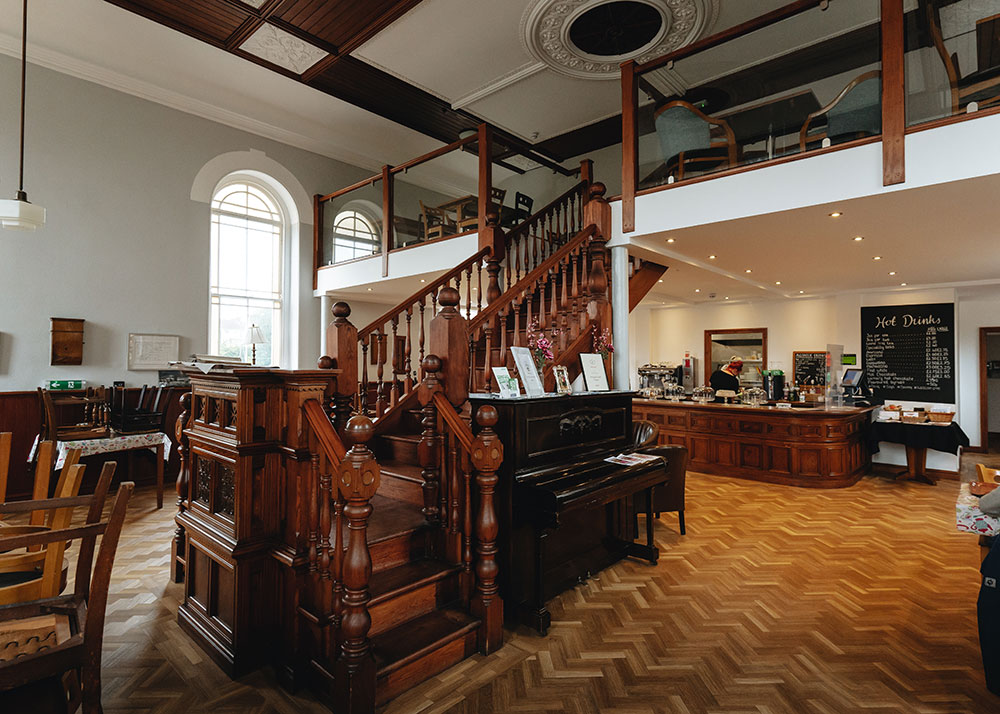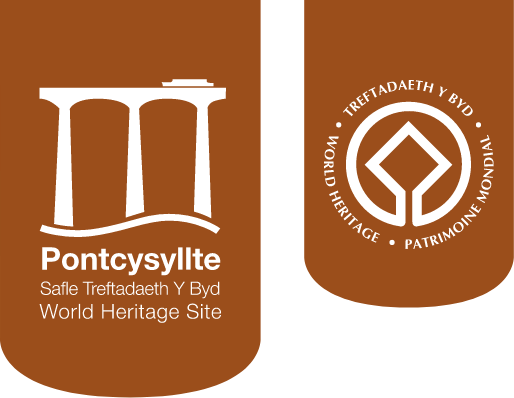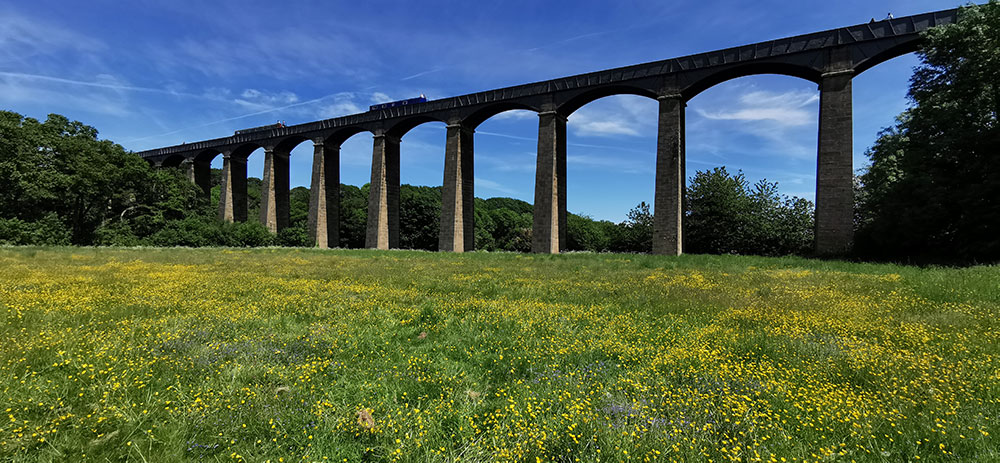Introduction
Then Trevor Basin would have been a hive of activity with boats being made or repaired and tonnes of coal and other goods being transferred between barges and trams. Today it is a hub for visitors and locals alike and during the summer months it is always busy with canal boats mooring or turning to go along the Llangollen Canal and people choosing to walk, paddle their canoes or push their bikes over the aqueduct.
The dry docks are still used as they were 200 years ago but warehouses and other buildings have found new uses as pubs, cafes or visitor centres.
Click on any Point of Interest marker to view the description
1. Pontcysyllte Aqueduct
Pontcysyllte Aqueduct is the monumental masterpiece of the World Heritage Site. Crossing it is an amazing experience, thrilling or daunting depending on how you feel about heights! It was the tallest navigable aqueduct in the world for over 200 years at over 38 metres or 126 feet above the River Dee.
William Jessop and Thomas Telford developed the design for an aqueduct with stone piers supporting a cast iron trough. This was by far the highest aqueduct planned at the time and was also the first project in Europe to use cast iron on such a large scale. John Simpson was the contractor for the stonework, William Hazledine for the ironwork.
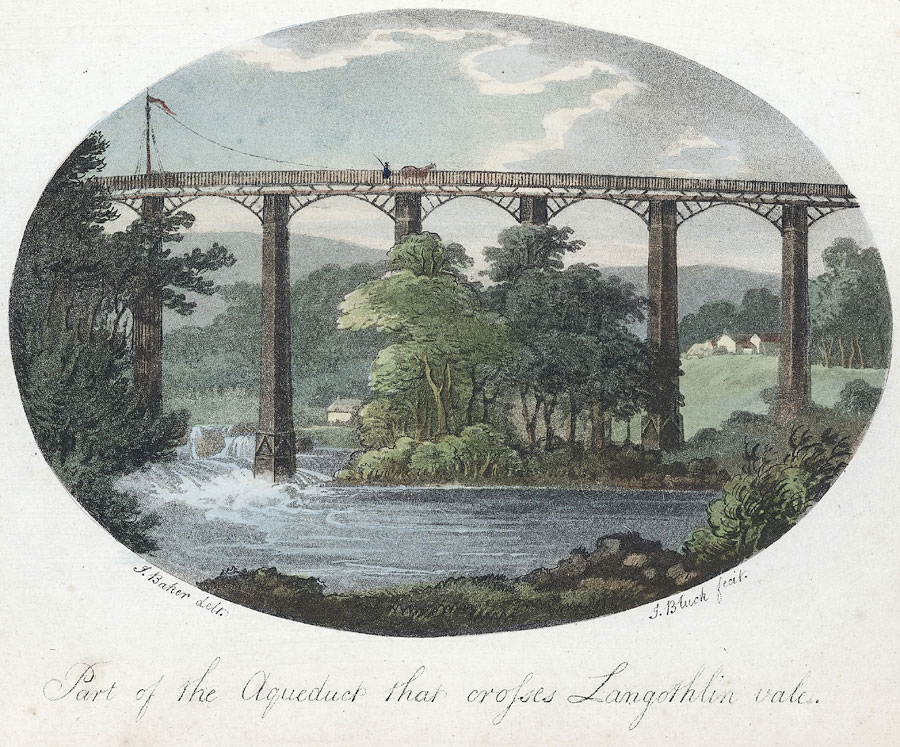
J Bluck Painting © By permission of The National Library of Wales
Listen to…
…the sound of kayakers crossing the aqueduct
The aqueduct is supported by 18 tapering sandstone piers quarried from the nearby Cefn Mawr and cast iron arches which carry a narrow iron trough for a distance of 307 metres/ 1007 feet, making it the longest navigable aqueduct when it was built. No wonder that the writer Sir Walter Scott described the aqueduct as ‘the stream in the sky’ and ‘the most impressive work of art’ he had ever seen.
William Hazledine supplied the cast iron from his foundries at Cefn Mawr and Shrewsbury and wrought iron from Upton Forge.
The cast iron handrails are only on the towpath side. There was never a railing intended for the other side, so passengers on boats crossing over the aqueduct have to take great care!
Tow rope grooves can be seen on the railings at the start of the aqueduct from the days when horses pulled the boats. There is also a plaque which states that the cost of the aqueduct was £47,000 – which would be over £4 million today. Actually the aqueduct cost about £38,500 and the embankment leading to it a further £8,500.
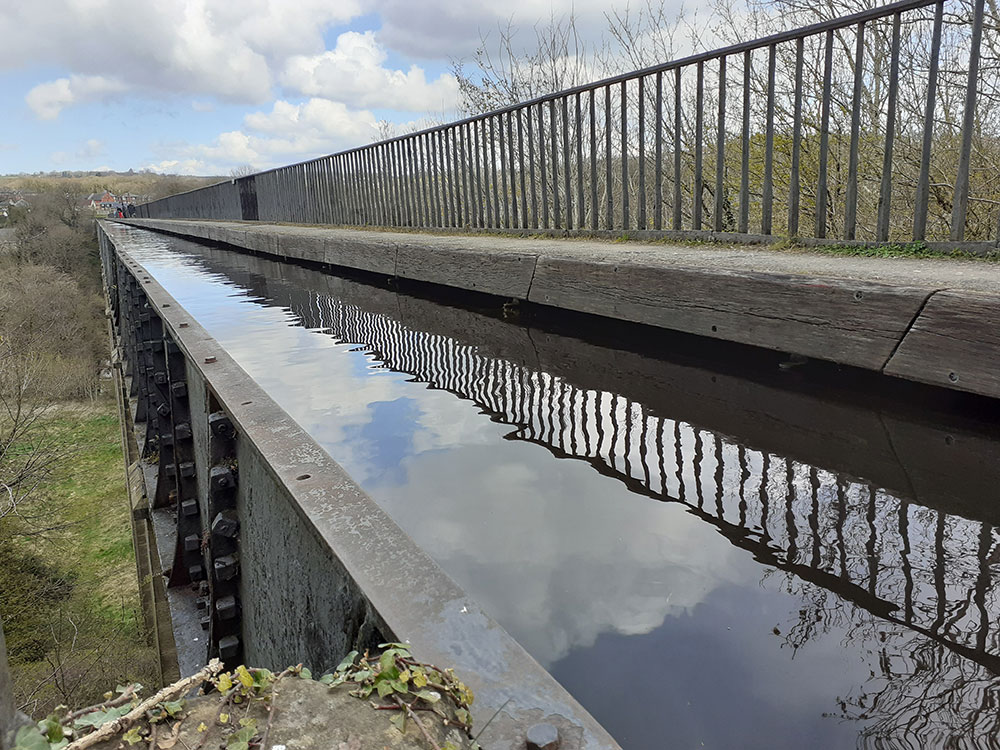
© Heather Williams
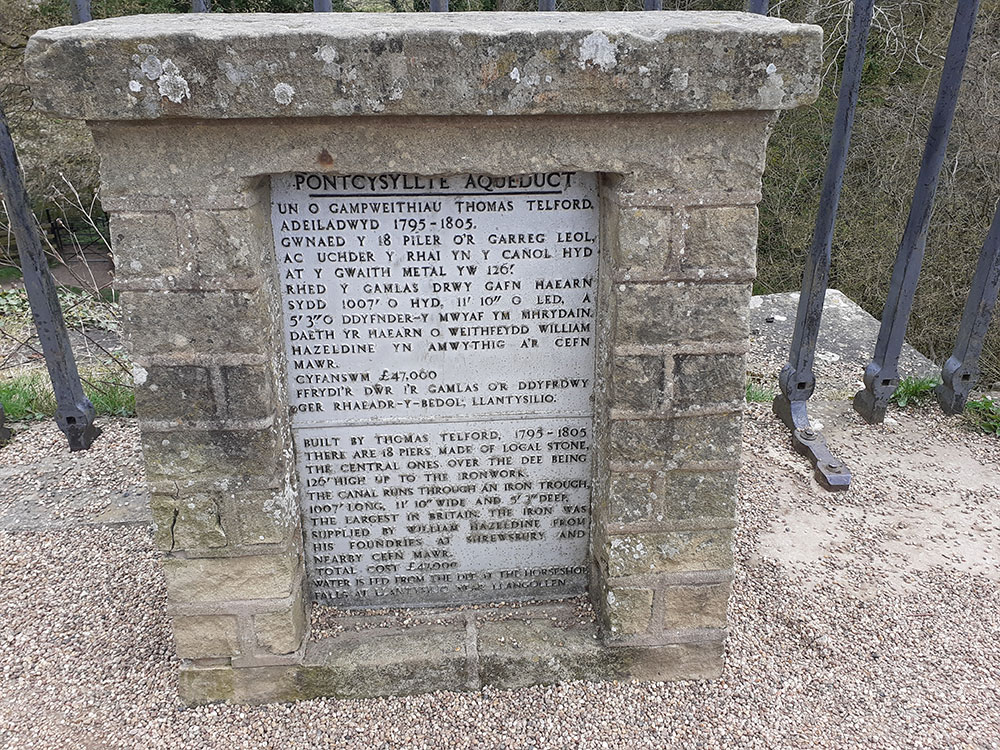
© Heather Williams
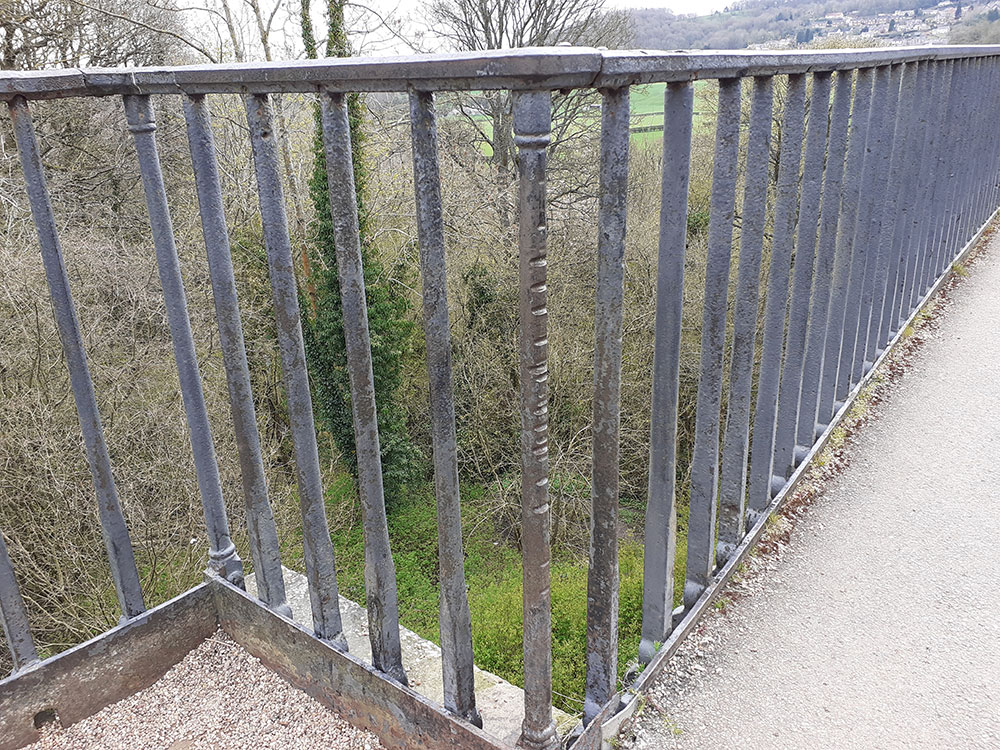
© Heather Williams
2. Building the Aqueduct
One of the greatest and largest canal earth moving works which had ever been undertaken at that time was carried out at the Froncysyllte end where an embankment 23 metres or 75 feet high was built using spoil from Chirk and Whitehouse tunnels and cuttings.
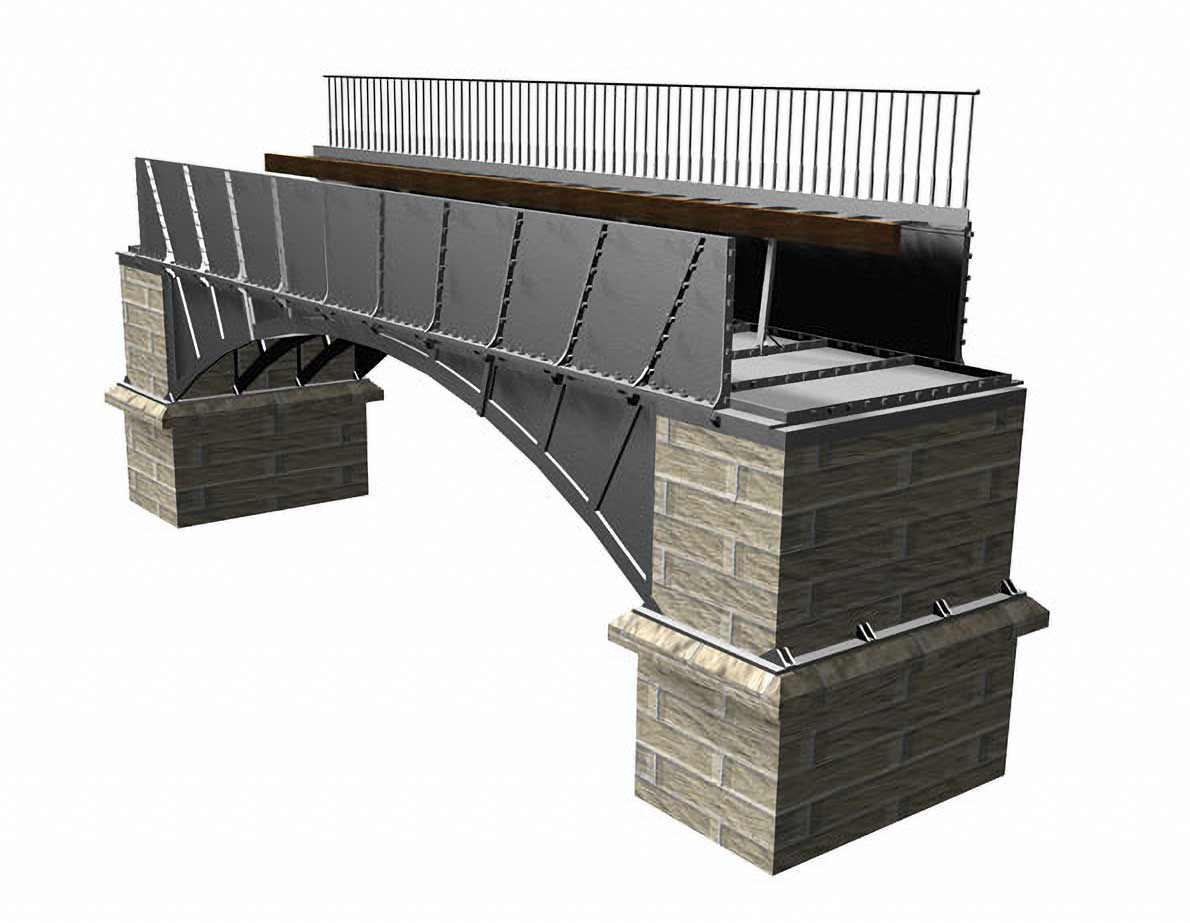
© Crown copyright: RCAHMW
The piers of the aqueduct were built up a stage at a time, supported by temporary timber bridges that carried the construction tramway. The workmen built up to the next level of each pier, starting at the furthest and working back towards Trevor. The temporary bridges were then dismantled and moved up to the new level until the piers were all at full height. The piers were solid to 21 metres/70 feet then hollow to make them lighter.
The piers still have the marks of this construction work. The start of the hollow part is marked by circular drain holes. Some stone blocks were also designed to be removed so that the hollow sections could be inspected. Square blocks mark where the temporary timber decks used to build the aqueduct were fixed. Blood from 1700 oxen was mixed with lime mortar to bind the stonework together, the oxen were then fed to the workers.
The engineers paid unusual attention to the safety of the workers. William Jessop was concerned that the men might be ‘giddy and terrified in laying stones with such an immense depth underneath them’. However to their credit Telford later wrote that ‘only one man fell during the whole of the operations in building the piers … and this took place from carelessness on his part’.
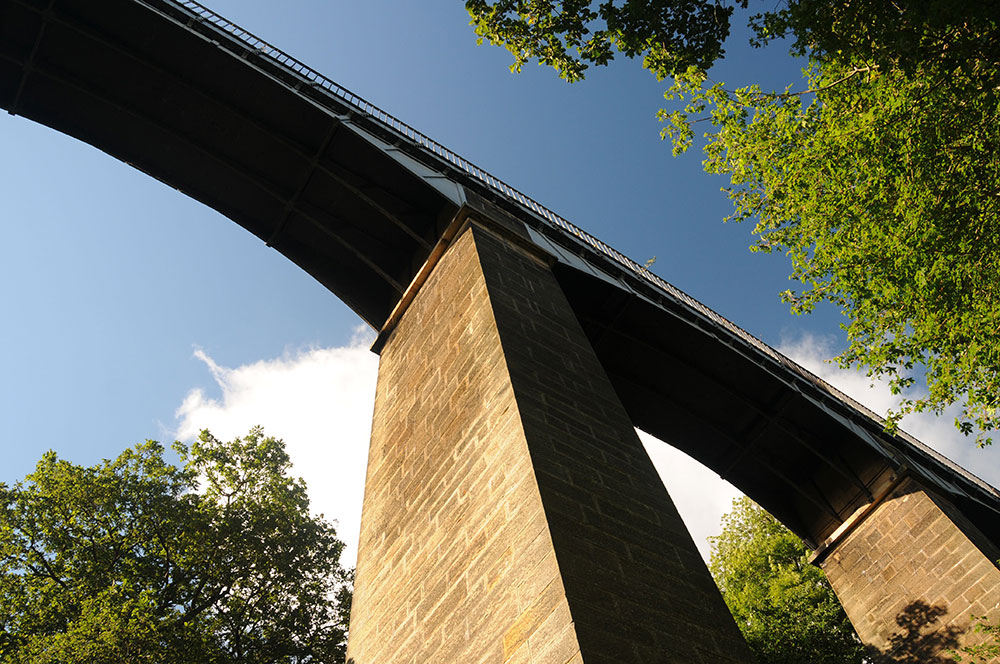
© Jo Danson
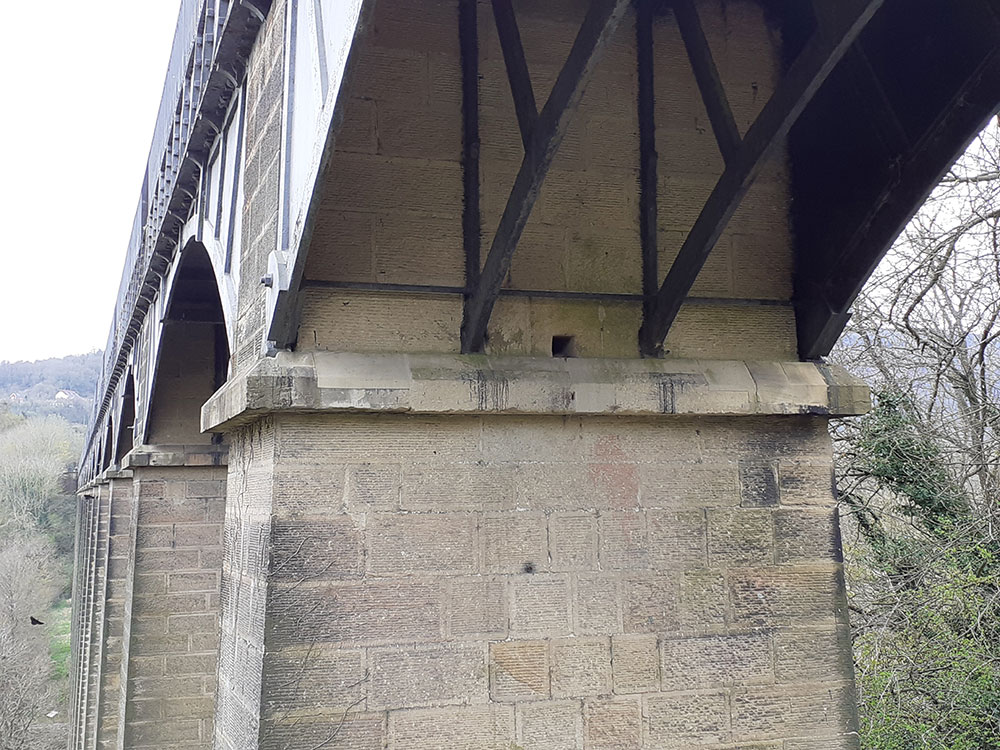
© Heather Williams
3. Thomas Telford ICE plaque
In 2007, 250 years after the birth of Thomas Telford, the Institution of Civil Engineers (ICE) erected a memorial in recognition of his lifetime of work designing and advising on canals, bridges, roads and harbours throughout Britain and also Sweden. It is in the style of the milestones which Thomas Telford put all along the London to Holyhead road.
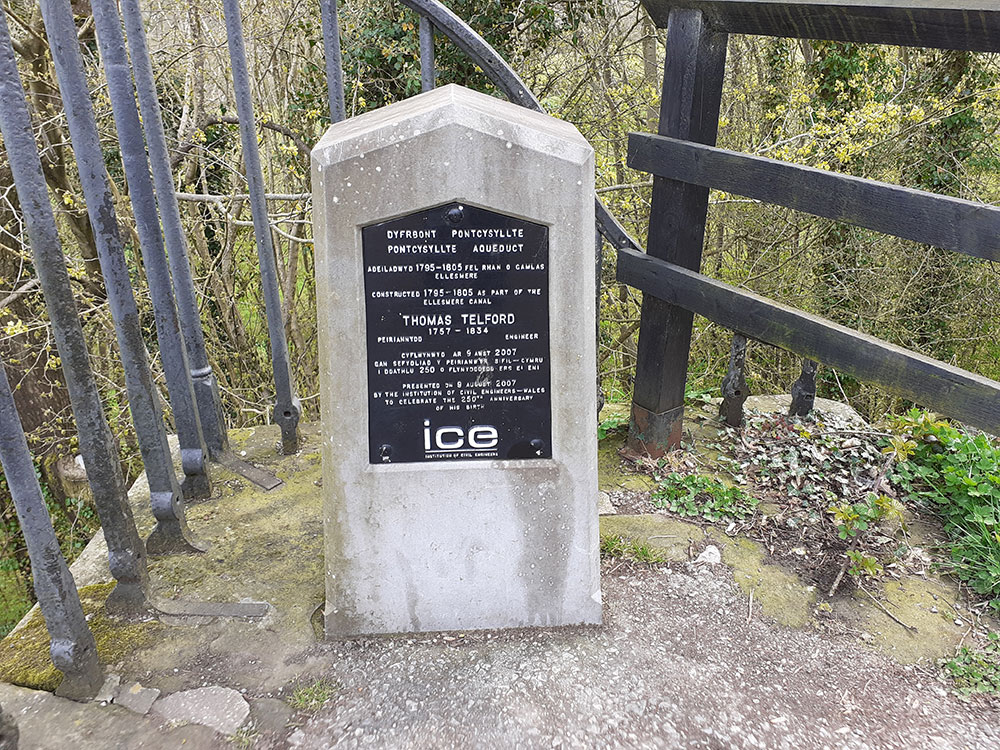
© Heather Williams
Telford was the Institute’s first President from 1820 until his death fourteen years later. In his early years he had the nickname ‘Laughing Tam’, as his manner was so genial and vivacious and he had a hearty laugh! Later on he gained more prestigious nicknames such as the ‘Godfather of Civil Engineering’ as well as the ‘The Colossus of Roads’.
Thomas Telford was born in Scotland and was apprenticed to a local stonemason. He moved to Edinburgh and then London where he gained the friendship and patronage of the Shrewsbury MP Sir William Pulteney, who was originally from the same Dumfriesshire area of Scotland. He commissioned Telford to remodel his residence Shrewsbury Castle, and was so impressed with Thomas’s work that he played a key role in his appointment as Surveyor of Public Works for Shropshire.
As a progressive engineer Thomas Telford was keen to try out new materials, and he pioneered the use of cast iron on the Longdon aqueduct over the River Tern in Shropshire.
In 1793 Telford was appointed General Agent, the equivalent of Chief Executive, of the Ellesmere Canal Company, part of which has become Pontcysyllte Aqueduct and Canal World Heritage Site.
His Holyhead Road, built to link London with Ireland, passes through the World Heritage Site. The iconic Conwy and Menai Suspension Bridges were both designed by Telford and at the time the Menai Bridge had the longest and highest span in Europe.
Much of his greatest work was done in Scotland, where he was responsible for building over 900 miles of roads and over 1000 bridges, and building or improving over 100 harbours, such as Wick harbour in the far north of Scotland. He also designed Pulteneytown, a model housing development for fishermen.
He died in 1834 at his home in Westminster and was buried at the nearby Abbey.
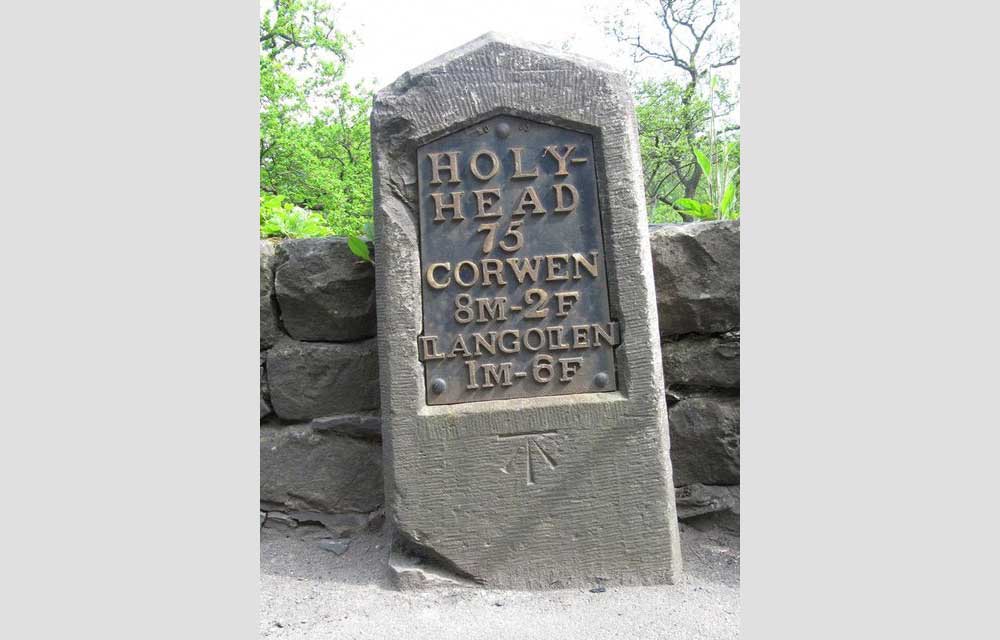
© The Milestone Society
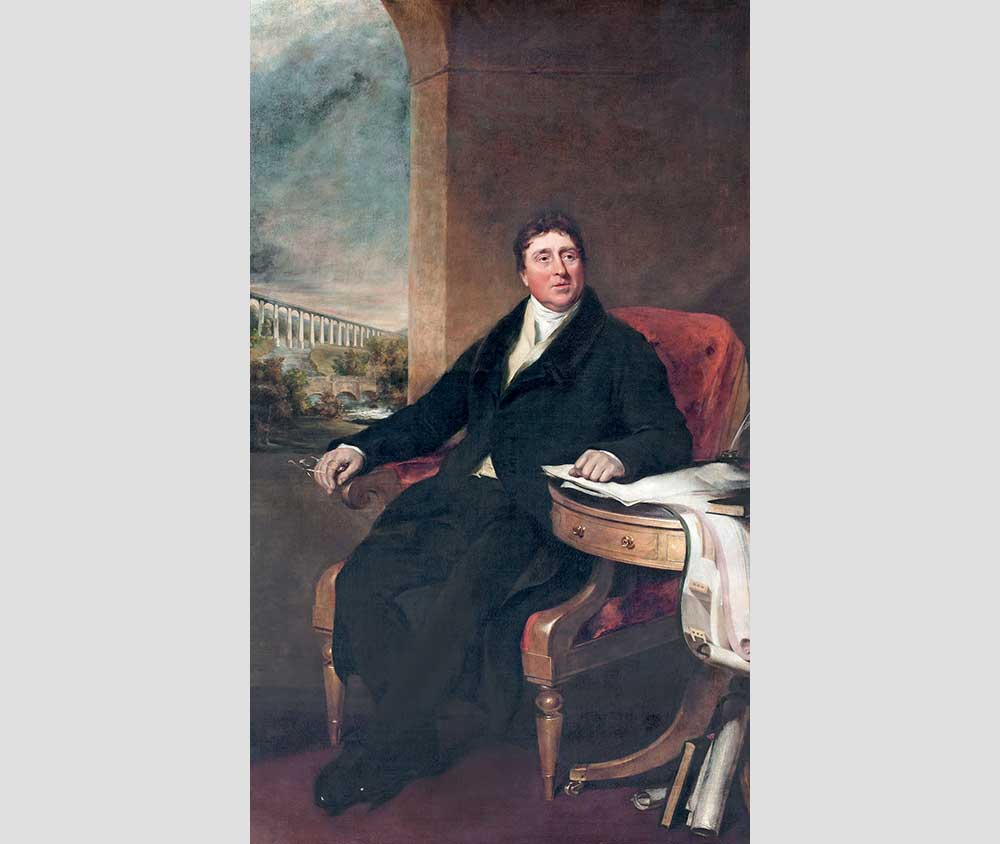
© Courtesy of Institution of Civil Engineers
4. Views from the Aqueduct
Looking west towards the mountains of Wales is the old Pont Cysylltau, sometimes called the Roman Bridge, that the Aqueduct was named after. Pontcysyllte is pronounced ‘pont-cuss-ull-teh’ and means ‘the bridge that links’. It is a fine example of a post medieval bridge with the earliest part dating back to 1679. It has been rebuilt to increase its width although it has needed repairs over the years!
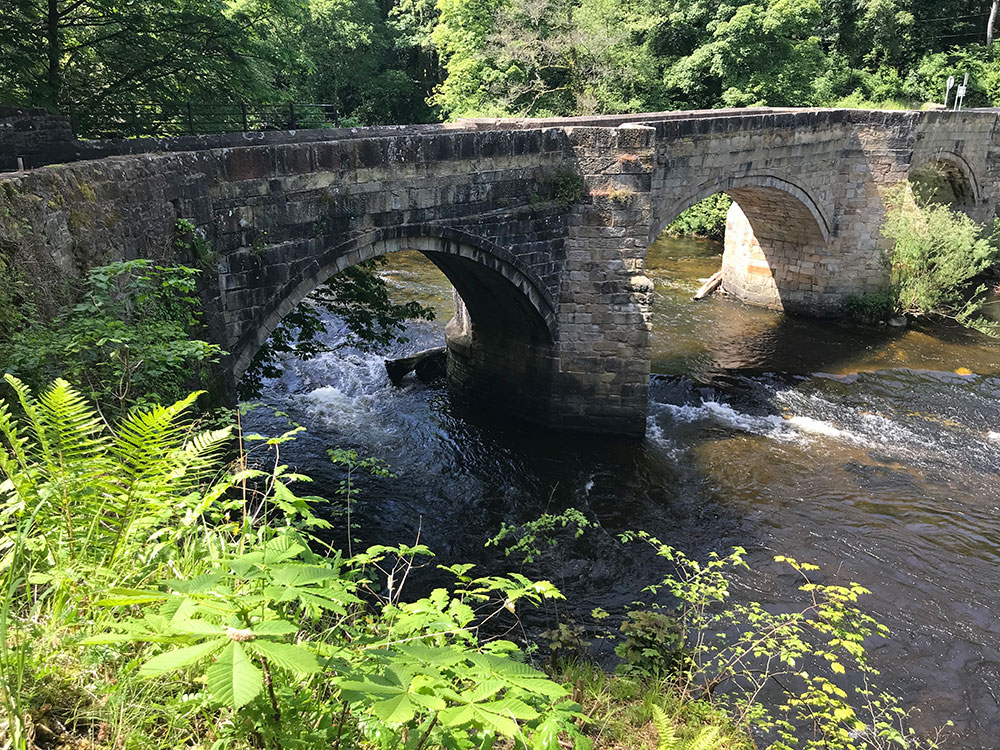
© Jo Danson
Looking towards England is the Cefn Bychan Viaduct, also known as the Newbridge Viaduct. The viaduct has 19 arches made from sandstone and is a fine example of an early railway design, described as ‘an extraordinary triumph of art over the difficulties of nature.’
Henry Robertson recognised the need to transport materials, particularly coal, from the Ruabon and Wrexham areas. The Shrewsbury to Chester railway line opened in 1848, two years after the viaduct had been completed. It became part of the Great Western Railway system in 1854.
High on the bank on the Trevor side of the river is Wood Bank, a distinctive house built in the 1790s. Thomas Telford is reputed to have used it as a drawing office during the construction of the Pontcysyllte Aqueduct as it was a great vantage point to keep an eye on work. In 1838 it was shown on the map as being a house, offices and a malt kiln. Malting was still taking place towards the end of the 1800s. The house is now privately owned.
Every 10 years the aqueduct is inspected to make sure the joints and stonework are still in good condition and safe to use. It takes one day to empty the aqueduct, releasing 1.5 million litres of water into the Dee below.
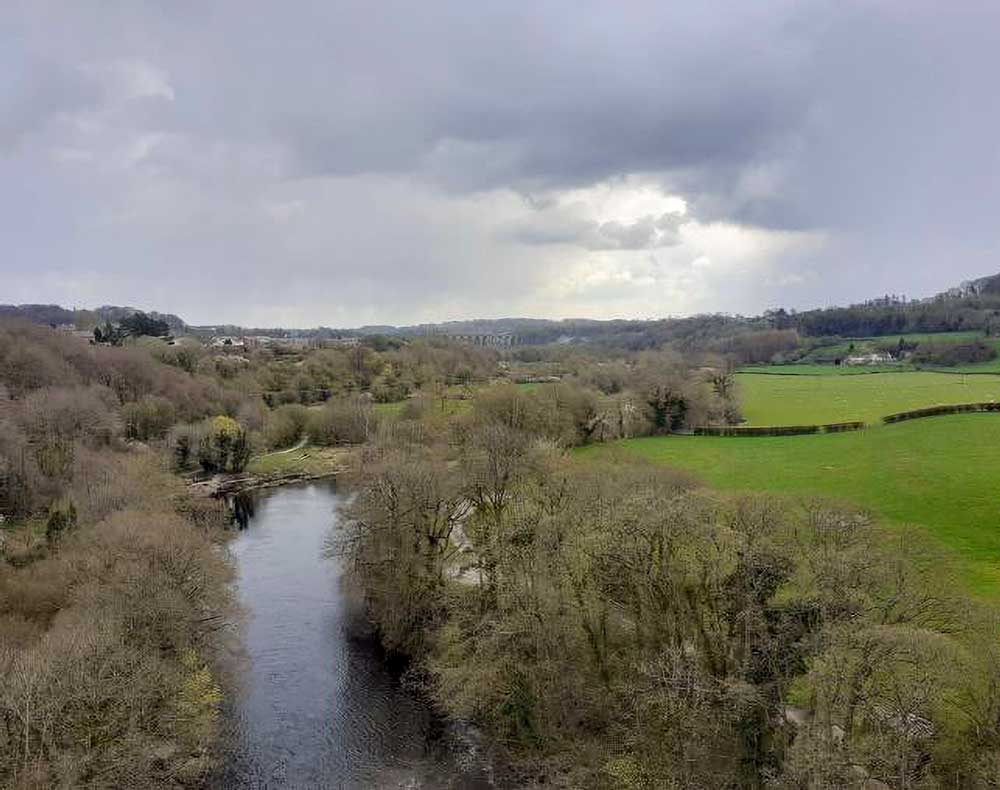
© Heather Williams
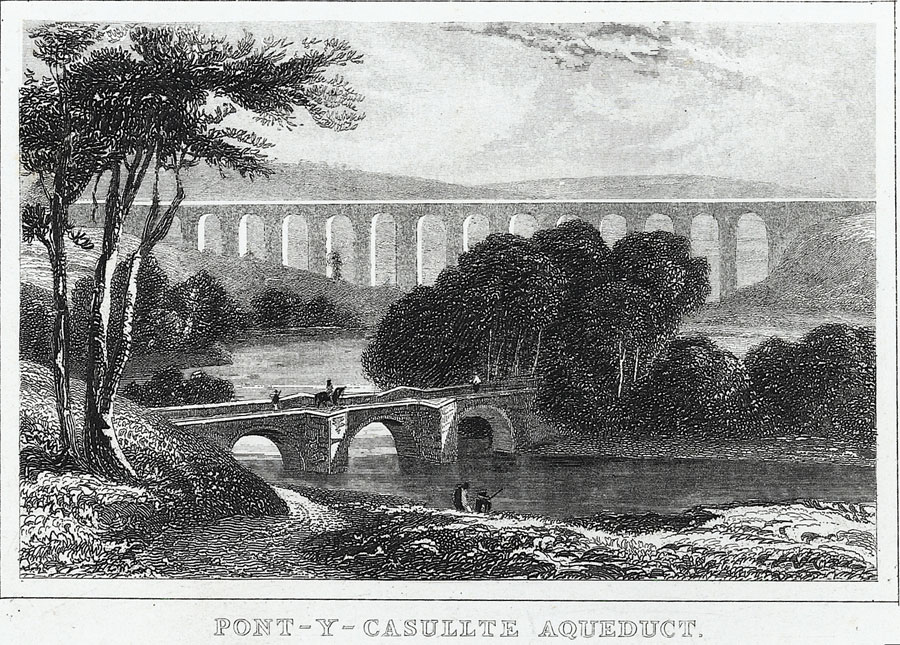
View of Bridge & Aqueduct, T Wallis © By permission of The National Library of Wales
5. Special events
People have flocked to aqueduct to witness special events. The first of these occasions was when Richard Myddelton, MP of Chirk, one of the original patrons of the Ellesmere Canal laid the first stone of the aqueduct on 25 July 1795. A plaque on the bottom of one of the piers on the Froncysyllte side of the River Dee marks this occasion.
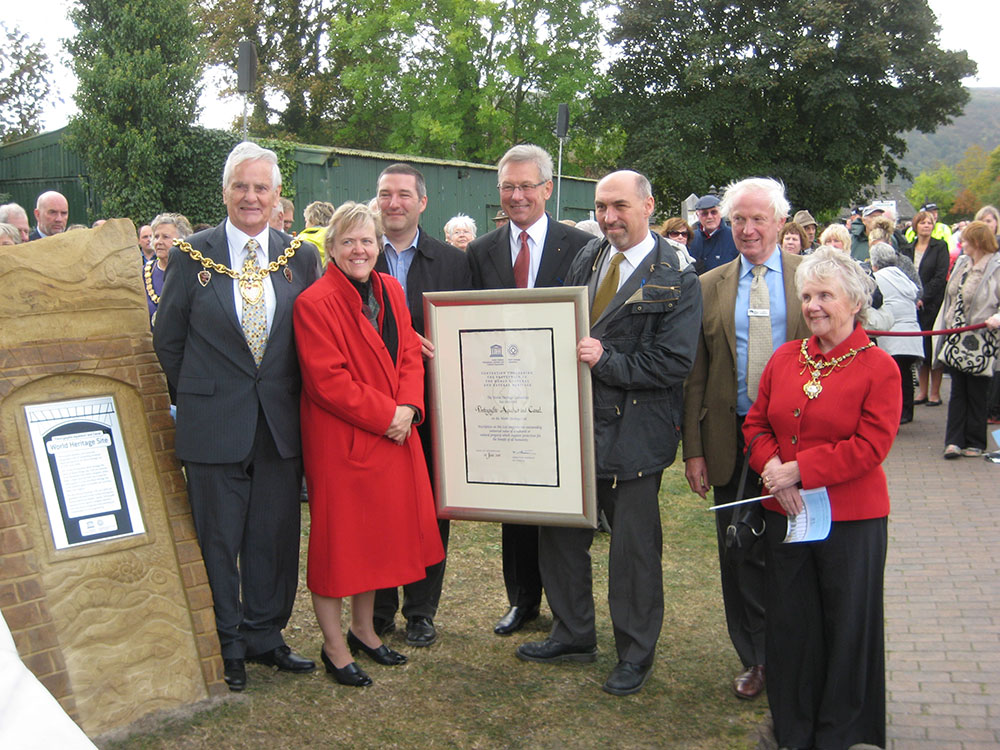
Presentation of the WHS inscription 2009 © Heather Williams
Ladies of Llangollen – Reflections on Pontcysyllte
Ten years later on 26 November 1805, a crowd of over 8000 gathered for the grand opening of the aqueduct. Spectators watched as the procession of six boats departed from Froncysllte Basin just before 2pm. The first boat carried the Earl of Bridgewater with other important dignitaries including the local landowner Sir Watkin Williams Wynne. Thomas Telford, committee members and the ‘Ladies of Llangollen’ followed in the second boat. The third boat carried the Shropshire Volunteers’ band lustily playing ‘God save the King’ and other patriotic tunes such as ‘Rule Britannia’. The next boat was filled with the engineers and others, such as the owners of mines and foundries connected with building the aqueduct.
The final two boats were empty, ready to carry the first loads of coal from William Hazledine’s Plas Kynaston collieries across the aqueduct. As soon as the first boat entered the aqueduct cannons fired a salute, and the crowd watching cheered. In a speech at the official opening it was boldly pronounced that the aqueduct ‘is destined to convey the riches of the mineral kingdom into the world of industry, and thence to every part of the universe’.
This spectacle was partly re-enacted in 2005 to mark the bi-centenary of the opening of the aqueduct with a procession of boats coming across the canal.
Pontcysyllte Aqueduct and Canal was designated a World Heritage Site on 27 June, 2009, ten years after it had been included on a tentative list of 25 possible future World Heritage Sites.
Celebrations were held on 3 October 2009 to mark this great achievement with the unveiling of the plaque and presentation of the certificate of inscription on UNESCO’s World Heritage List.
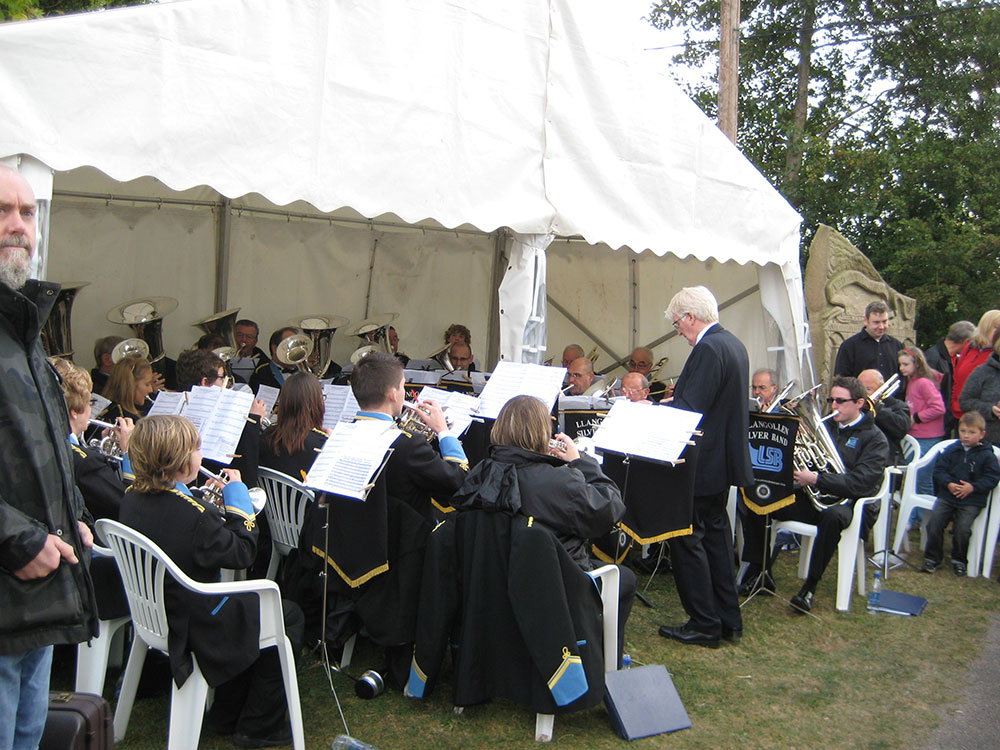
Llangollen Silver Band © Heather Williams
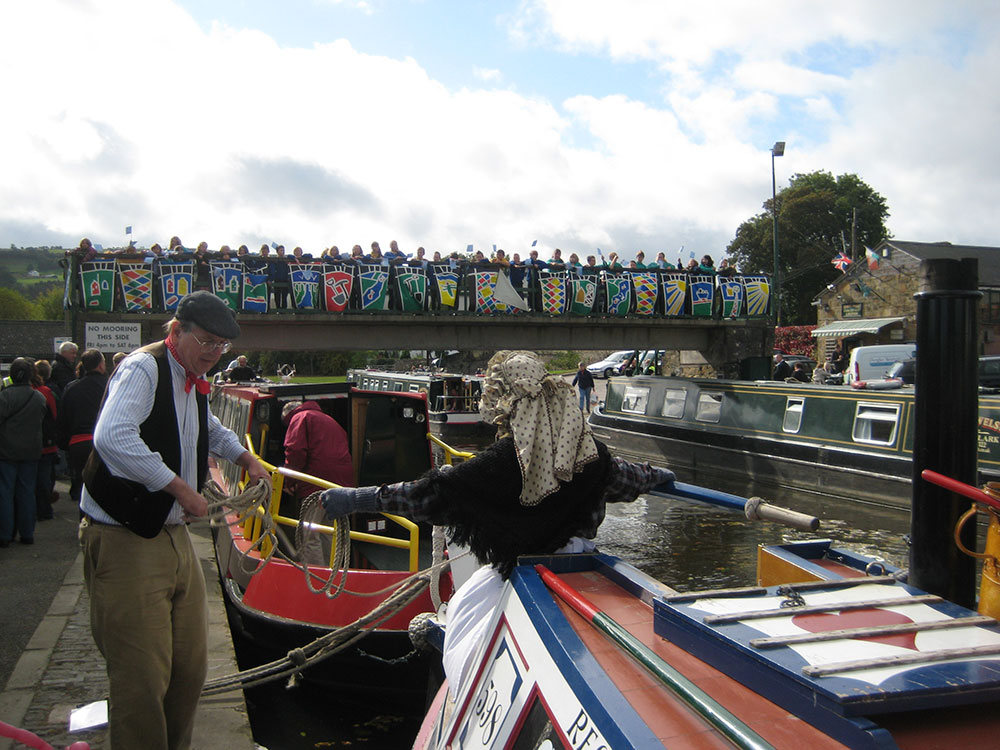
Saturn at the celebrations 2009 © Heather Williams
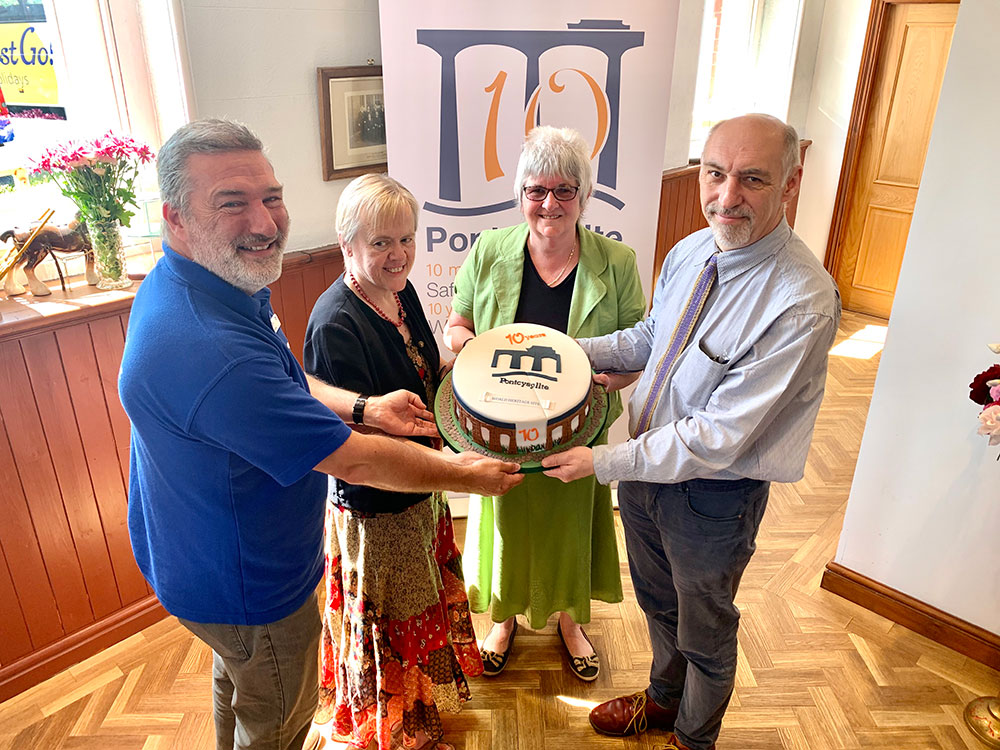
10 year celebration cake © Wrexham County Borough Council
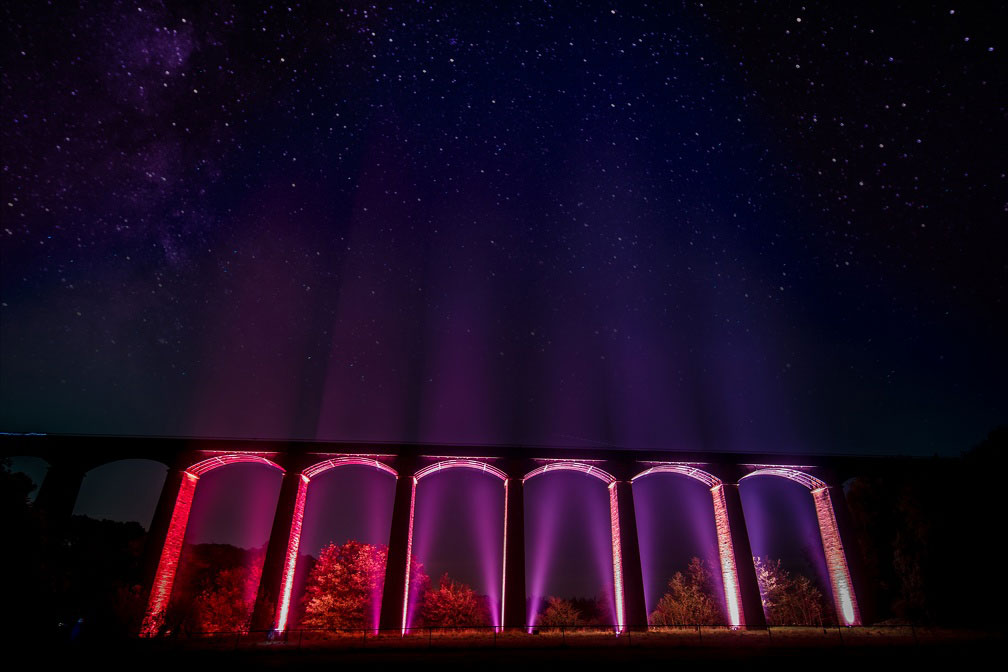
© Wrexham County Borough Council
6. Trevor Basin
Trevor Wharf was the construction yard for the Pontcysyllte Aqueduct when building started in 1795. The wharf opened for general use in 1805 and was the terminal for the main Ellesmere Canal. The original plan was to continue the canal to Wrexham, Chester and the River Mersey but this was too expensive and instead the new Llangollen feeder canal was proposed to supply water for the canal from the River Dee.
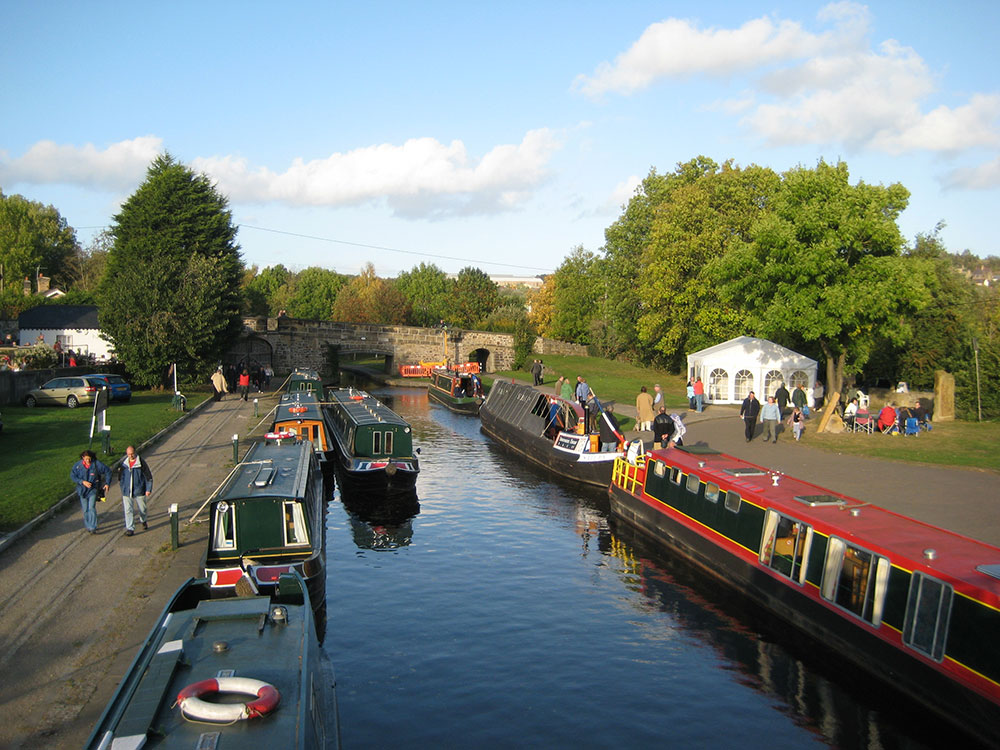
© Heather Williams
The stone building used by the Anglo Welsh boat company was originally a warehouse for goods that needed protection from the weather.
Close to the wharf is Scotch Hall Bridge, designed by Thomas Telford and Matthew Davidson to carry New Road over the canal. It is an early innovative design with a flattened stone arch supported by cast iron beams, which allowed a gentle approach for road traffic. Originally there was only one arch, but arches were added either side to allow the tramroad to pass under the road.
Beyond the bridge was the terminus of the three mile long Ruabon Brook Railway, actually a horse-drawn tramroad, which served coal mines, ironworks, brickfields and other industries. There were lines on each side of both branches of the canal terminal, making it easy to load boats from the wagons. At the end of the right hand branch was a boat dock.
The tramroad was rebuilt in 1864–7 as a conventional standard gauge railway, and a steam locomotive was acquired to operate it. At the same time a warehouse was built over the boat dock so that goods could be moved between the railway and the canal under cover.
Close to the boat dock is a bricked-up arch of a bridge where the private Plas Kynaston Canal went. It was built in the 1820s to serve limekilns and coal mines but from 1870 the main user was the large chemical works at Cefn Mawr.
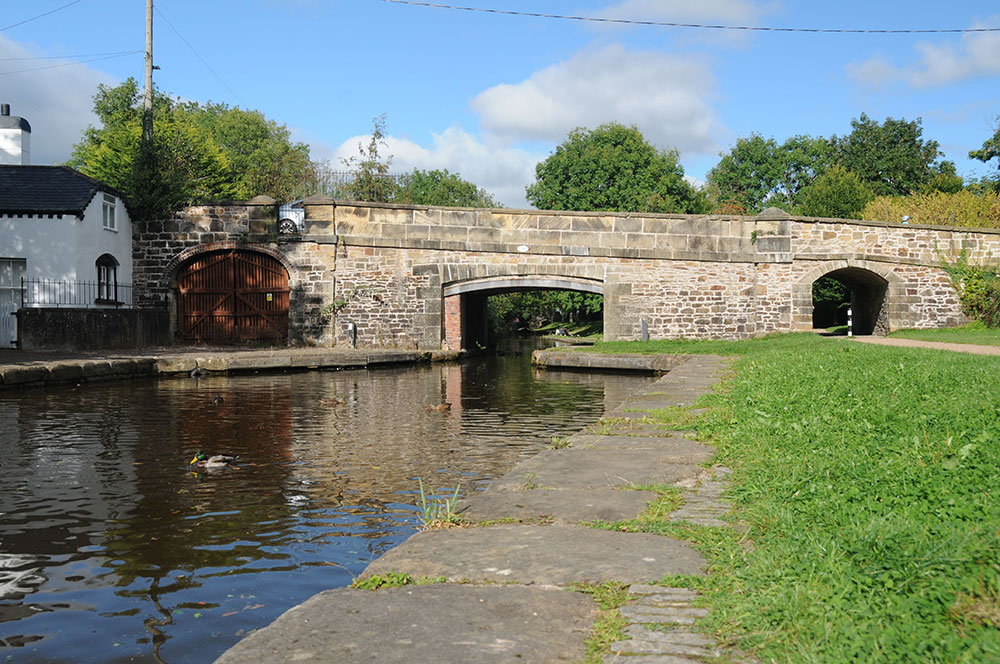
© Jo Danson
7. Dry Dock Area
Boats have been repaired in the dry docks since the canal was built. They are still in use today and are an example of the hundreds of dry docks built throughout the canal system.
Gates close off the canal so that the water can be drained away from the docks so a boat can be inspected and repaired before refilling the dock when the boat is ready to leave. The cover building was added later.
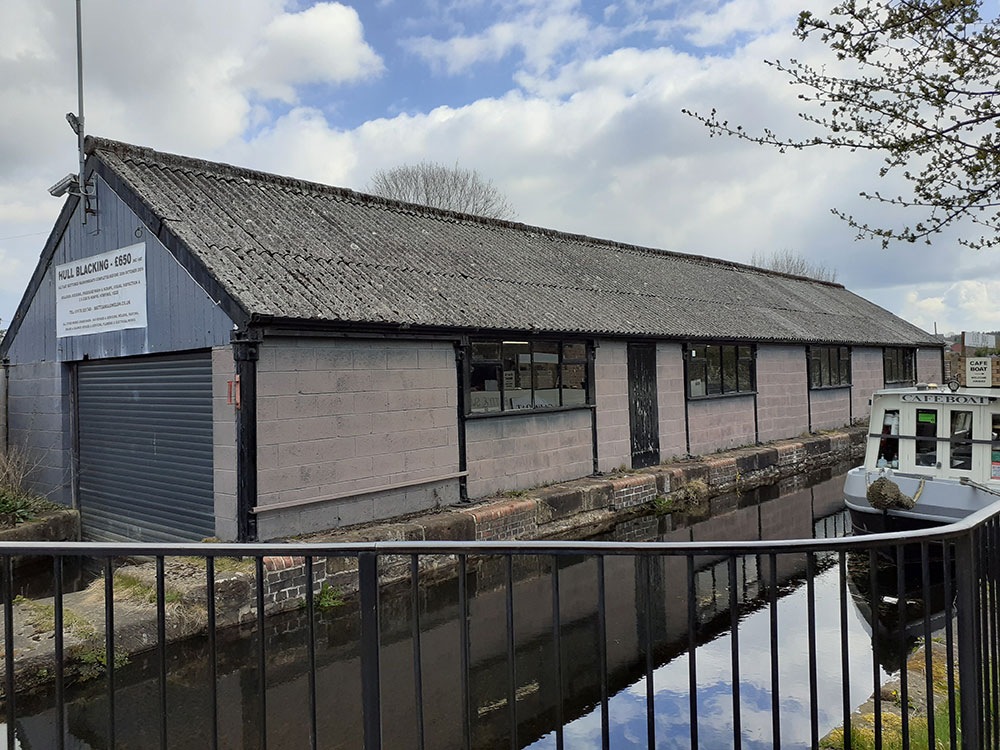
Dock Cottage © Heather Williams
Between five and ten people were employed to maintain boats and the wagons for the tramroad. In 1914 six boats were built here because the boat-builders employed at Chester were on strike. These included ‘fly-boats’, express delivery boats built to run non-stop day and night to carry important and perishable goods.
Saturn was one such fly-boat built at Chester in 1906 and used to rush cheese and other fresh produce from farms in Cheshire and Shropshire to industrial towns and cities, such as Manchester and Wolverhampton. She remained a horse-drawn cargo boat into the 1950s but then was converted to a hotel boat. She was fully restored by 2005 and took part in the bi-centenary celebrations of the opening of the Pontcysyllte Aqueduct. Saturn is now used as a travelling education resource and heritage attraction.
Dock Cottage was built for the manager of the docks in the early 1800s but by 1838 had a smithy and beer shop attached to it. You can see on the gable end where the roof was raised in brick above the original sandstone.
The Canal and River Trust visitor centre building, dating from the late 1800s, was probably originally used as workshops and stores.
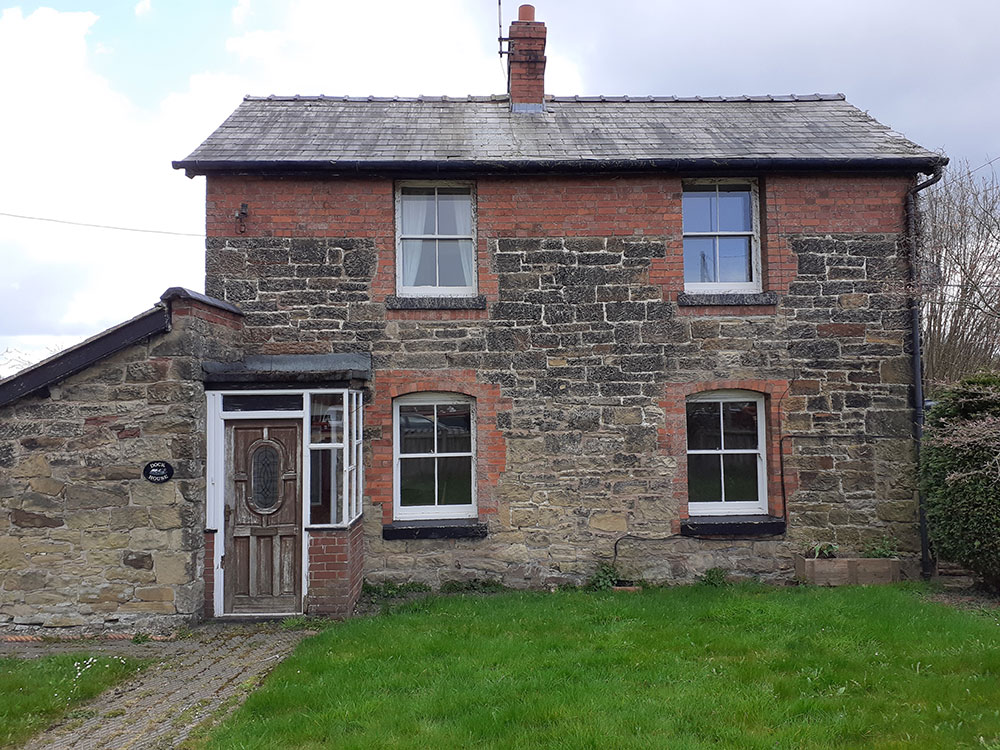
© Heather Williams
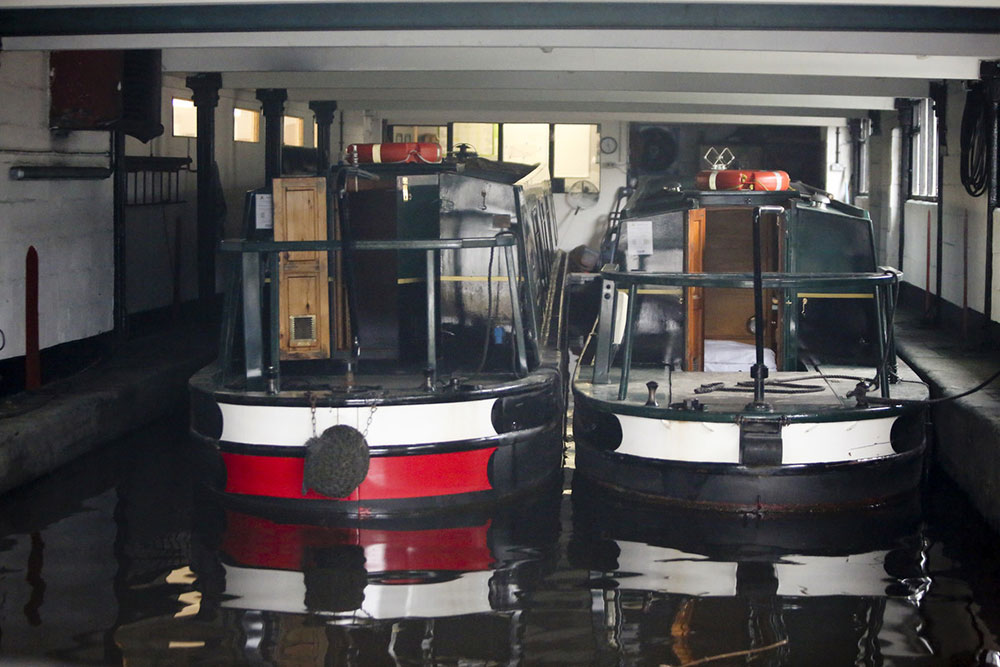
© Canal & River Trust
8. Telford Inn/Scotch Hall
A plaque above the doorway of the Telford Inn reveals the original name as Scotch Hall. The house was built in the late 1790s and is typical of Thomas Telford’s work as an architect, with a hipped roof and overhanging eaves. The ground floor retains the layout of a central hall with roughly square rooms.
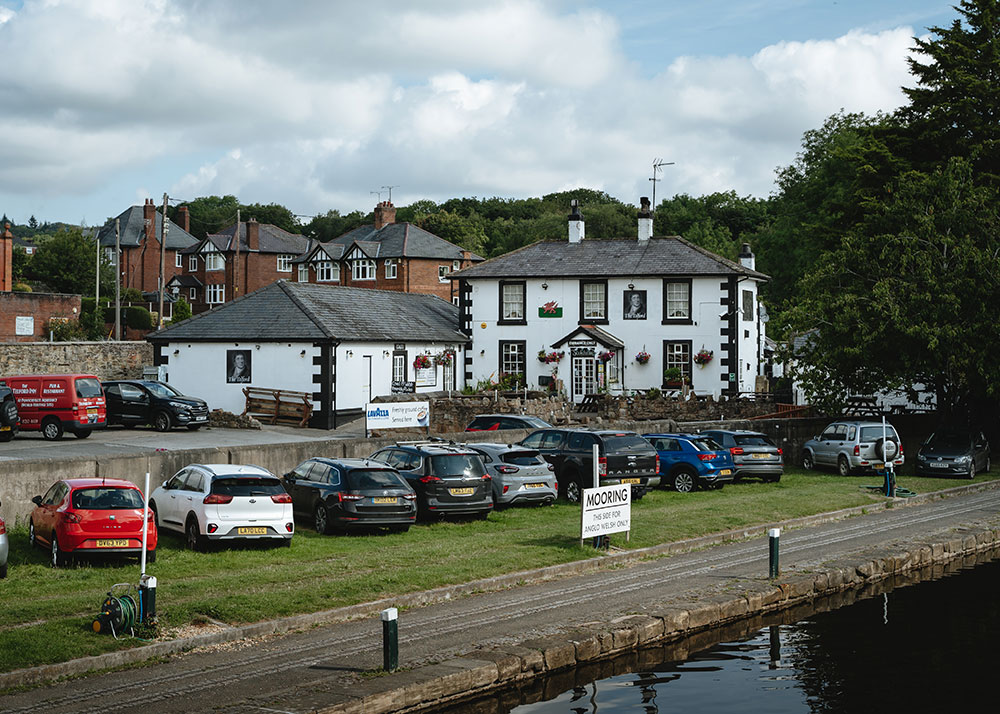
It is thought that the house was built for Matthew Davidson. Thomas Telford knew Matthew Davidson as they both grew up in Scotland and had previously worked together on bridge projects in Shropshire. As a trusted friend he asked Matthew Davidson, known as a ‘walking library’, to be the resident supervising engineer for the aqueduct.
Scotch Hall was ideally situated so that Matthew Davidson could oversee the building of the aqueduct and Thomas Telford could stay here when inspecting progress. Davidson played a key role in the design work of the aqueduct and the canal. In fact Telford, when writing to a friend in 1797, referred to ‘Davidson’s famous aqueduct, which is almost reckoned among the Wonders of Wales’.
Davidson fell in love with Wales, as well as the Welsh girl he married, but after the completion of the aqueduct he moved back to Scotland to work on the Caledonian Canal working with Telford again.
The single storey building attached to the main building is reputedly the Accounts House where workmen were paid during the construction of the aqueduct.
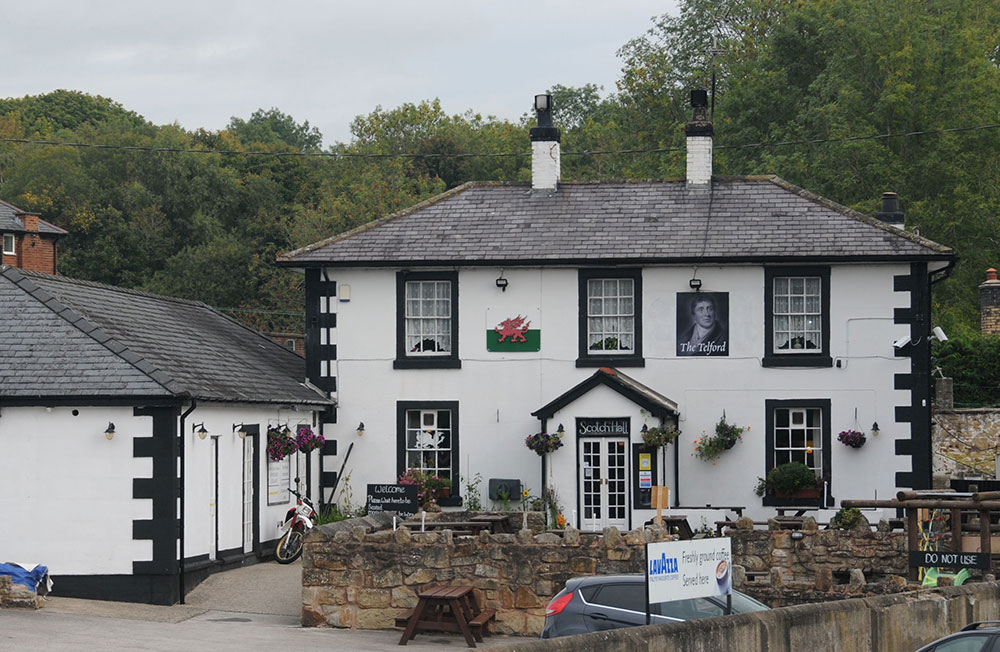
© Jo Danson
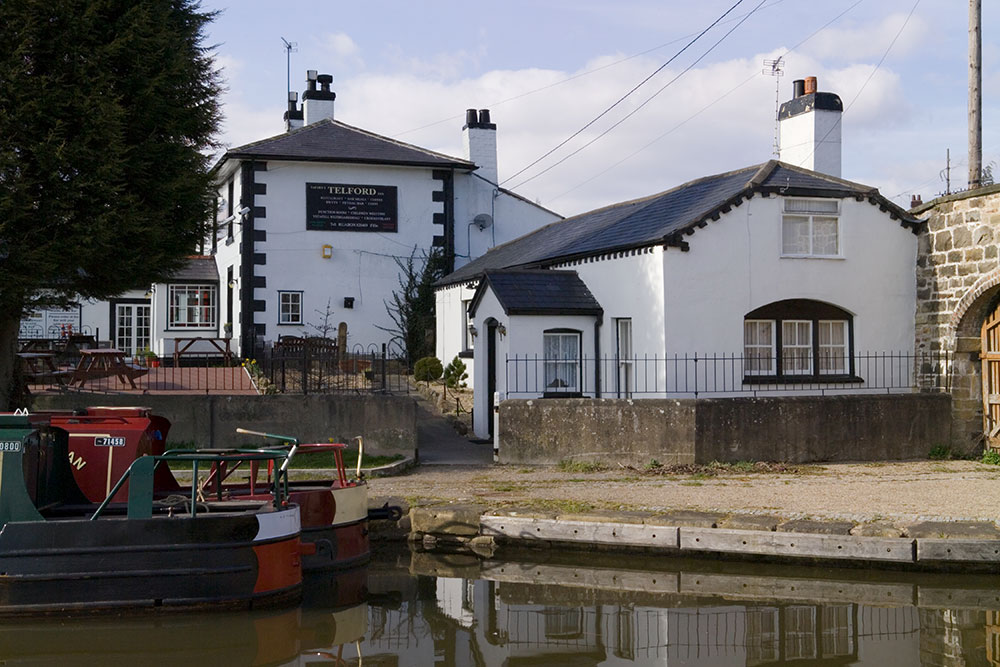
© Crown copyright: RCAHMW
9. Bryn Seion Chapel
Bryn Seion Methodist Chapel was built in 1902 to replace an older chapel situated closer to the River Dee. The chapel closed in 1993 and was converted into an antiques shop. It was sold again and lovingly restored before opening as a tearoom in 2018, a perfect place to end a tour!
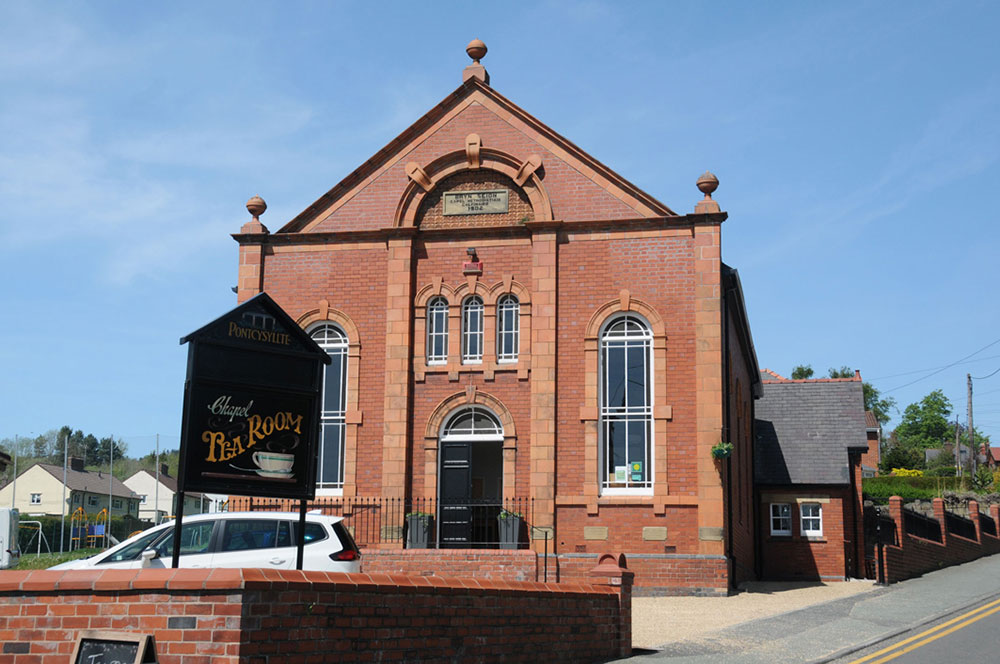
© Jo Danson
The chapel probably needed to be replaced as the congregation had outgrown the original chapel, as happened with many non-conformist chapels in the 1800s to the early 1900s. Not long after the chapel was built it is likely that even more people would have come to the chapel on Sundays as in 1904 the Methodist Revival led by Evan Roberts swept the whole of Wales.
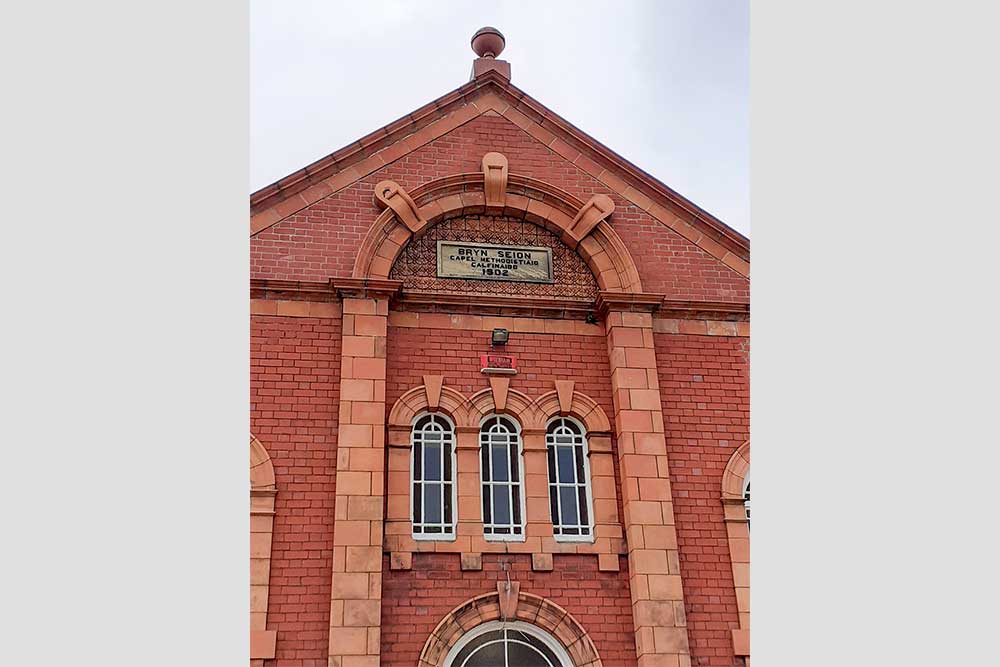
© Heather Williams
